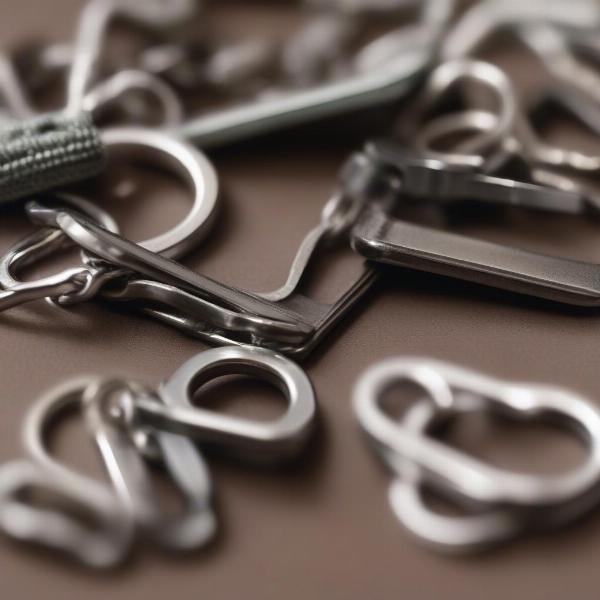Putting a dog tag on a collar seems simple, but it’s crucial to do it correctly for your furry friend’s safety. A properly attached tag ensures your dog can be easily identified and returned home if they ever get lost. This guide covers everything from choosing the right tag and collar to attaching it securely and considering modern alternatives like QR code tags.
Choosing the Right Collar and Tag
Before attaching the tag, make sure you have the right collar and tag. The collar should fit snugly but comfortably, allowing you to fit two fingers between the collar and your dog’s neck. Choose a durable material like nylon or leather. For tags, opt for a sturdy metal tag that can withstand wear and tear. Ensure the engraving is deep and legible, containing essential information like your dog’s name, your phone number, and ideally, your address.
Attaching the Tag: Step-by-Step Instructions
Attaching the tag is straightforward. Most tags come with a small split ring. Here’s a simple guide:
- Open the split ring: Carefully pry open the split ring using your fingernails or a small pair of pliers. Be gentle to avoid damaging the ring.
- Slide the tag onto the ring: Once open, slide the dog tag onto the ring.
- Close the split ring: Gently close the split ring, ensuring it’s securely fastened. Double-check that the ring is completely closed to prevent the tag from slipping off.
 Different dog tag attachments
Different dog tag attachments
Different Types of Collar Attachments
While split rings are the most common, other attachment methods exist:
- S-hooks: These offer a quick and easy way to attach tags but can sometimes detach more easily than split rings.
- Quick-Release Clips: These are convenient for switching tags between collars but can also be less secure.
Ensuring Tag Visibility and Comfort
Make sure the tag hangs freely and doesn’t get caught on anything. It should be easily visible without obstructing your dog’s movement. Regularly check the tag for wear and tear and replace it if necessary.
Beyond the Traditional Tag: QR Codes and Microchips
While traditional tags are essential, consider supplementing them with a microchip. A microchip is a permanent form of identification implanted under your dog’s skin. Also, consider tags with QR codes. These tags allow anyone with a smartphone to scan the code and access your contact information and other vital details about your dog.
Troubleshooting Common Tag Issues
- Jingling Tags: If the jingling bothers you, consider using a tag silencer or attaching the tag to a dedicated tag holder on the collar.
- Tags Getting Caught: Ensure the tag is attached securely and doesn’t snag on your dog’s fur or other objects.
- Lost Tags: Regularly inspect the ring and tag for wear and tear. Consider using a more robust attachment method if your dog frequently loses tags.
Conclusion
Putting a dog tag on a collar is a small but vital step in ensuring your dog’s safety. By following these simple guidelines and choosing the right tag and attachment method, you can give yourself peace of mind knowing your furry friend is easily identifiable should they ever wander off.
FAQ
- What information should I put on my dog’s tag? Your dog’s name, your phone number, and your address (optional but recommended) are crucial.
- What type of tag is best? Sturdy metal tags are generally the most durable.
- Can I put more than one tag on my dog’s collar? Yes, you can attach multiple tags, such as a rabies tag and an ID tag.
- What should I do if my dog loses their tag? Get a new tag made immediately and consider microchipping your dog for permanent identification.
- Are there alternatives to traditional tags? Yes, QR code tags and microchips offer additional identification options.
- How tight should my dog’s collar be? You should be able to fit two fingers comfortably between the collar and your dog’s neck.
- How often should I check my dog’s tag? Regularly inspect the tag and ring for wear and tear, and replace them as needed.
Related Articles on ILM Dog
About ILM Dog
ILM Dog (ilmdog.com) is your comprehensive resource for expert advice on dog breeds, health, training, nutrition, grooming, and much more. We offer valuable insights and practical tips for both new and experienced dog owners worldwide. Whether you’re looking for guidance on choosing the right breed or need advice on dog health and behavior, ILM Dog provides trusted information to help you provide the best care for your canine companion. For any inquiries, reach us at [email protected] or +44 20-3965-8624.